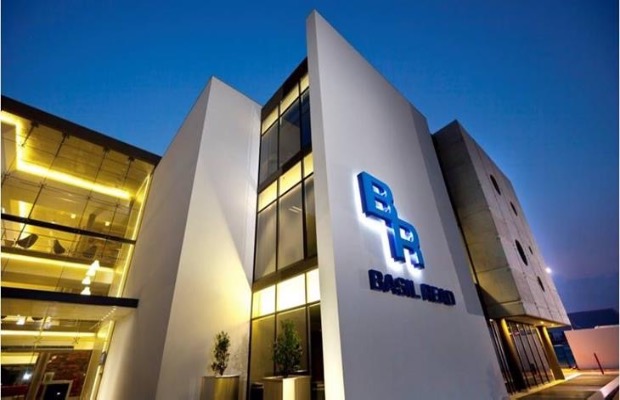

MD: Adamantem
We are all aware of the events that led to South Africa being awarded the 2010 FIFA World Cup. We made a serious bid to host the 2006 World Cup, which was eventually awarded to Germany; however, we won the right to host the 2010 World Cup which saw a major economic boom in the country. This saw a massive increase in business for companies like Basil Read, Group Five and Murray & Roberts who became some of the best performers on the JSE.
However, as the honeymoon period that followed the World Cup started to fade away, South Africa started to slip into an economic recession. This had a significant impact on the construction industry because there was little money to be set aside for infrastructure development. At a recent virtual event held by the South African Institute of Chartered Accountants, the Basil Read business rescue was used as an example of the challenges currently faced by the construction industry as well as the challenges that were unique to Basil Read.
It seems as if trouble was always lurking around the corner and a serious case could be made for the use of a business consultant who could have provided Basil Read with an objective view of the potential for distress. When looking at the history of the Basil Read rescue, several questions need to be asked.
Industry challenges
Siviwe Dongwana, MD of Adamantem, pointed out that the significant level of distress experienced by the construction industry as a whole over the last several years (up to and including 2018) had a significant impact on Basil Read’s financial position.
“If we look at the business model for construction companies in South Africa, we see that there are a lot of challenges that need to be addressed. One of the biggest challenges is that these companies face onerous construction agreements where funding requires a lot of attention. The second major challenge that these companies face is the fact that these companies face high value contracts that have unsustainable single digit margins,” said Dongwana.
During the boom years, there were a lot of construction companies (and associated suppliers and subcontractors) entering the market. However, as discussed earlier, the honeymoon period ended and Government – who were the primary source of new projects during the boom years – faced significant challenges and had to put a halt on all new infrastructure projects. “This led to a situation where there was declining infrastructure spending and increased competition. This drought meant that there was no new work in the industry and the ability of companies to use new projects to fund the financial obligations from existing projects ceased to exist,” said Dongwana.
Added pressure
As if these challenges were not enough for Basil Read, Dongwana alluded to the fact that its being a listed company may have also contributed to the company’s challenges.
“Being a listed company comes with onerous requirements when it comes to financial management and financial reporting. This put a lot of pressure on the company. But this was not the only element that led to the company’s distress. There was a specific culture that existed around cash, particularly if you look at the way that people behaved in various projects. There was a feeling of: well, we belong to a big company, and if we ask for cash, head office will fund it. The consequence of this is that it led to an endemic cash flow leak. If such leaks are not managed timeously, it creates problems,” said Dongwana.
He added that it was these cashflow leaks which led to Basil Read entering business rescue.
Major contracts, major ramifications
It must be pointed out that the Basil Read Group was not placed into business rescue, only the construction portion of the company was placed into rescue.
When the company went into rescue, it had 26 ongoing projects and R1.1 billion of exposure in terms of retention and performance guarantees. Out of the 26 projects, 13 were public sector clients. “As we are all aware, Government payment cycles are extremely slow and this lethargy has a direct bearing on capital management,” said Dongwana.
He added that, ultimately, if a company does not receive cash on time, it quickly gets to a point where it cannot pay its debts when they fall due.
In addition, because most of the projects manged by Basil Read were in the public sector and because each of these projects were very large, Basil Read had a wide footprint in the industry especially for smaller sub-contractors. This point was emphasized by Dongwana who said, “Due to the size of these projects, they had to be executed with the help of subcontractors and joint venture partners. When a company is put into distress, there is a moratorium that impacts subcontractors as well. The whole ecosystem ends up being impacted”.
He added that, when assessing the case for business rescue, Basil Read’s financials indicated that there was a significant amount of cash expected from the completion of these projects. “It is not as simple as this though. The engineers on those projects need to make the final call on whether cash on those projects can be released or not. When it comes to performance guarantees, if the amount is not what the construction company expects, then the issue is taken to a deal adjudication board, and that process is very lengthy,” said Dongwana.
A lengthy process
It seems as if the timing and duration of optimising your cash flow in the construction industry is an issue. Particularly when Government is the industry’s major client.
But as Dongwana pointed out at the beginning of the event, financial distress does not happen overnight. Where the roots of Basil Read’s distress planted long before the company was placed in business rescue? Did the attitude towards cash that Dongwana alluded to extend to management?
Key questions
Several significant questions can be asked following the lessons learned during the Basil Read business rescue:
- The first question is the ability to predict an event that would put a company into distress. The State’s coffers were always going to run dry, this is something that was widely publicised at the beginning of the construction boom. The inability of construction companies to put sufficient mitigation measures in place raises concerns about the business models that all construction companies follow;
- the expectations from the JSE when it comes to financial reporting are the same expectations placed on every company. How can some companies cope, and others cannot? Questions need to be asked about management and the leadership that governed the company at the time. This extends to the attitude towards cash. Management should have been stricter when it came to this to mitigate the leaks that occurred; and
- could Basil Read have diversified its dependence on Government contracts?
Hindsight is 20/20. Was Basil Read always destined to enter business rescue? The over dependence on Government (as the main client) was dangerous for two reasons:
- the Government well, in so far as funding projects and starting new projects, was always going to run dry; and
- the long payment cycles when it comes to any public sector contract is not a new risk (it has always been an issue). This is always a significant risk factor for any business.
If we look at the last challenge and combine the long payment cycle with the fact that most of these projects needed to be completed with the use of sub-contractors (because of the skills shortage in the industry), we have a perfect storm in terms of cash flow leaks.
The factors discussed in this article led to Basil Read’s distress. In the second part of this issue, we will focus on Basil Reads response before the company was placed into business rescue as well as the rationale for the ongoing business rescue. The key question in the second part of this issue will be whether Basil Read was a candidate for business rescue or liquidation.

Photo By: Stephen Gunnion




